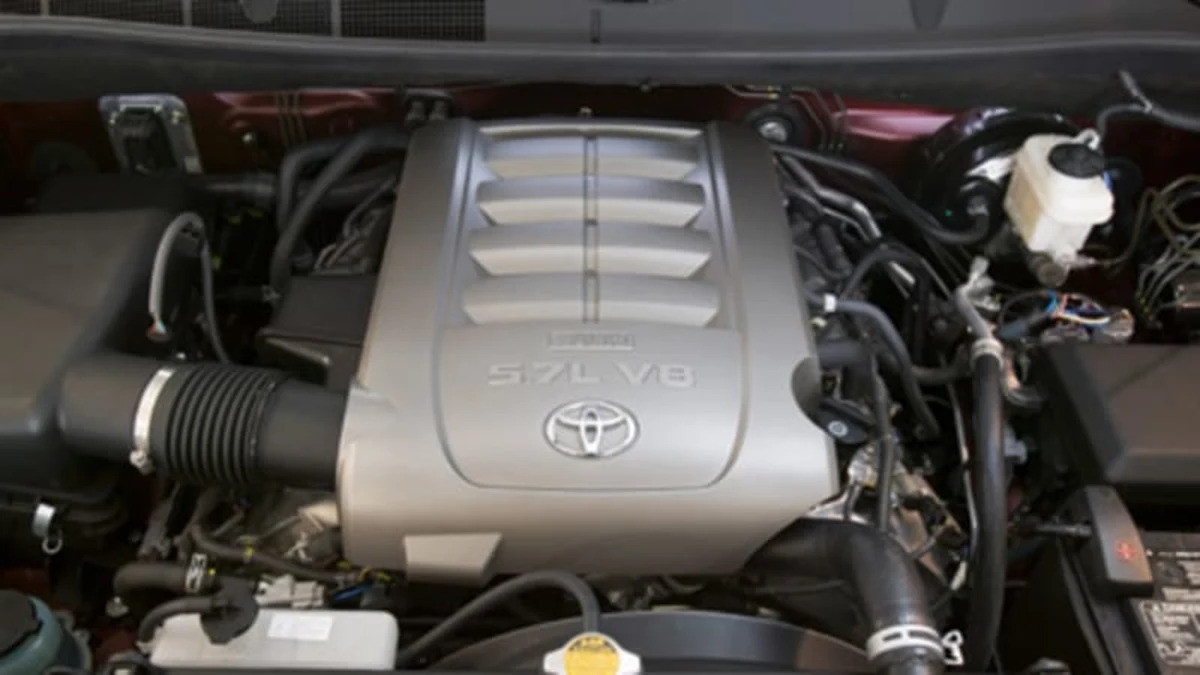Someone on Facebook commented yes. I can’t see why not. The engines are most likely built at the same place.Thanks. So, then another possible angle to explore is does a Tahara plant produced LC make the same sound as the Hino / Hamura ones.
Navigation
Install the app
How to install the app on iOS
Follow along with the video below to see how to install our site as a web app on your home screen.
Note: This feature may not be available in some browsers.
More options
You are using an out of date browser. It may not display this or other websites correctly.
You should upgrade or use an alternative browser.
You should upgrade or use an alternative browser.
The hybrid that can't...
- Thread starter Proj626
- Start date
- Thread starter
- #102
I know their are some engines built at Hino due to the issue of previous model engine issues coming out of that plant. I don't know if Tahara makes engines.Someone on Facebook commented yes. I can’t see why not. The engines are most likely built at the same place.
Piston is aluminum. Cyinder wall is a steel insert cast into the aluminum block. Piston rings are also steel.Should everything expand proportionally though? I know metal expansions can cover up manifold leaks, but that is because manifold and the engine block are at different temperatures. Cylinder wall and piston should be at the same temperature.
The early 2GR engines had a piston slap noise at startup that was related to thermal expansion. After the engine is past dead cold, it no longer makes the noise. My mom's V6 Rav4 (2GR-FE) has 240k miles on it and has made that piston slap noise since day one. It drives very strong to this day, though. I can't believe my dad keeps it around because it has hit like 3 deer so the bumper covers and paint are trashed. It's pretty rough in presentation but mechanically sound.
Plenty of warranty left and time in the year since purchase. If there is a problem it will result in performance problems or engine failure. I’d prefer no one touch mine at a dealership unless I’m experiencing mechanical performance problems. So I’m going to drive on and enjoy it, if there’s a recall or I experience any issues I’ll take care of it then. I’m still under 1,000 miles, looking forward to seeing what the break in oil looks like, about 300 miles to go.are you? Because that same sound was tracked down to my engine cylinder 1 issue. engine torn down in pics on post 1. I'd say taking it to your dealer to have them diagnose it would be a better option.
That's about where I'm at with this whole thing as well. If it rises as a problem I'll deal with it then. I don't trust the dealer techs to diagnose it on a brand new platform.Plenty of warranty left and time in the year since purchase. If there is a problem it will result in performance problems or engine failure. I’d prefer no one touch mine at a dealership unless I’m experiencing mechanical performance problems. So I’m going to drive on and enjoy it, if there’s a recall or I experience any issues I’ll take care of it then. I’m still under 1,000 miles, looking forward to seeing what the break in oil looks like, about 300 miles to go.
Agreed. I’ve accepted the fact that this is an advanced vehicle that makes lots of different noises. It drives great.
I did an oil change at 1200 miles and it was clean and clear.
I did an oil change at 1200 miles and it was clean and clear.
It’s probably a common noise with nothing to worry about. The T24A has been around for 3 years in high use. I can’t see the engine having problems just because it went into a Landcruiser. This being a new vehicle it will most likely have sounds were not use to.
- Moderator
- #108
The only noise that I've noticed that was new to me was the sound that it makes when deaccelerating to a dead stop. It sounds like a muffled clunking noise, which I think is the electric motor disengaging. Not enough that I'm worried about it at all but I will keep an eye on it.
It’s probably the opposite, disengaging of the ICE from the transmission.The only noise that I've noticed that was new to me was the sound that it makes when deaccelerating to a dead stop. It sounds like a muffled clunking noise, which I think is the electric motor disengaging. Not enough that I'm worried about it at all but I will keep an eye on it.
This and it is also downshifting when stopping - it is engine breaking into the electric motor: regeneration. The LC has regeneration built into the transmission and electric motor where it turns the motor backwards through the transmission.It’s probably the opposite, disengaging of the ICE from the transmission.
Last edited:
The occasional stutter when coming to a stop is a little jarring. Certainly far less smooth than every other hybrid I've owned (priuses & rav4). Obviously a completely different hybrid system, but it stands out as one of those "huh, that's a little rough" kind of things. My wife noticed it too and asked "uhhh, is it supposed to do that?".It’s probably the opposite, disengaging of the ICE from the transmission.
- Moderator
- #112
Seriously...... What difference is there if the electric motor disconnects from the engine or the engine disconnects from the electric motor!It’s probably the opposite, disengaging of the ICE from the transmission.
I found that smoothed out. It’s the switch from the charging the battery break to the hydraulic break.The occasional stutter when coming to a stop is a little jarring. Certainly far less smooth than every other hybrid I've owned (priuses & rav4). Obviously a completely different hybrid system, but it stands out as one of those "huh, that's a little rough" kind of things. My wife noticed it too and asked "uhhh, is it supposed to do that?".
Yeah quite different compared to regular Toyota hybrids. Regular Toyota hybrids like prius and rav4 have an advance planetary gear transmission that couples electric motors and ICE. So there is no need to decouple things from each other with a clutch. Transmission can simply cut to the power going to/from the engine or the electric motor, or combine or split power going to/from each. This is how they achieve really good MPG numbers. ECU keeps the engine at its peak efficacy (around 2500 to 3000 RPM, depending on engine) and the transmission sends the needed power to keep the car moving while the rest is slit to spin the electric motor to charge the battery.The occasional stutter when coming to a stop is a little jarring. Certainly far less smooth than every other hybrid I've owned (priuses & rav4). Obviously a completely different hybrid system, but it stands out as one of those "huh, that's a little rough" kind of things. My wife noticed it too and asked "uhhh, is it supposed to do that?".
We got a regular transmission connected to a n electric motor, which is coupled to the ICE with a clutch.
Last edited:
Regarding the noise that's being reported here, could it not be the Direct Injection portion of D4S cycling on and off? I posted this in the other thread that talks about a knocking noise heard below 25 mph. D4S kind of sounds like an exhaust leak to be honest.
LC does not have regen front brakes.This and it is also downshifting when stopping - it is engine breaking into the electric motor: regeneration. The LC has regeneration built into the transmission and electric motor where it turns the motor backwards through the transmission, in addition to the regenerating front brakes.
Does it even have regen breaks at the wheel at all?LC does not have regen front brakes.
As far as I understand, regen breaking is achieved through the electric motor as the momentum of the car spins the electric motor, which generates current and charges the battery. Electromagnetic field created at the motor during this process generates the resistance that slows the car down.
When you press the brake, hybrid controller increase the current that is being pulled by the battery, this increases the electrical resistance at the motor, slowing the car faster, but also generating more current to charge the battery at a higher rate. Increasing the resistance to increase current (and therefore slowing the car down faster) is less efficient, as it generates heat both at the motor and the battery, so letting the motor slow the car down by simple coasting is more efficient. Heat generated is also the reason why you should make sure hybrid battery vents are not blocked
no vehicle(unless it has a motor at the wheel) has regen braking located at the wheel. Regen braking is, as you described, accomplished by the electric motor.Does it even have regen breaks at the wheel at all?
As far as I understand, regen breaking is achieved through the electric motor as the momentum of the car spins the electric motor, which generates current and charges the battery. Electromagnetic field created at the motor during this process generates the resistance that slows the car down.
When you press the brake, hybrid controller increase the current that is being pulled by the battery, this increases the electrical resistance at the motor, slowing the car faster, but also generating more current to charge the battery at a higher rate. Increasing the resistance to increase current (and therefore slowing the car down faster) is less efficient, as it generates heat both at the motor and the battery, so letting the motor slow the car down by simple coasting is more efficient. Heat generated is also the reason why you should make sure hybrid battery vents are not blocked.
You forget that camshafts were snapping in the early 5.7L V8s.Good thing that Toyota moth-balled that V8. Man did that thing have issues.

Toyota expresses regret for Tundra camshaft failures on internet forums - Autoblog
Our good buddy Mike Levine over at Pickuptruck.com has updated his report on the story surrounding the failure of 20 camshaft in the 2007 Toyota Tundra's 5.7L V8 engine. Levine noticed that Toyota has already posted on two internet forums expressing regret to Tundra owners over the incident...
Similar threads
- Replies
- 0
- Views
- 1K
- Replies
- 9
- Views
- 1K
♻️ For Trade
Looking for OEM rock rails; have OEM running boards
- Replies
- 0
- Views
- 273
- Replies
- 7
- Views
- 789

